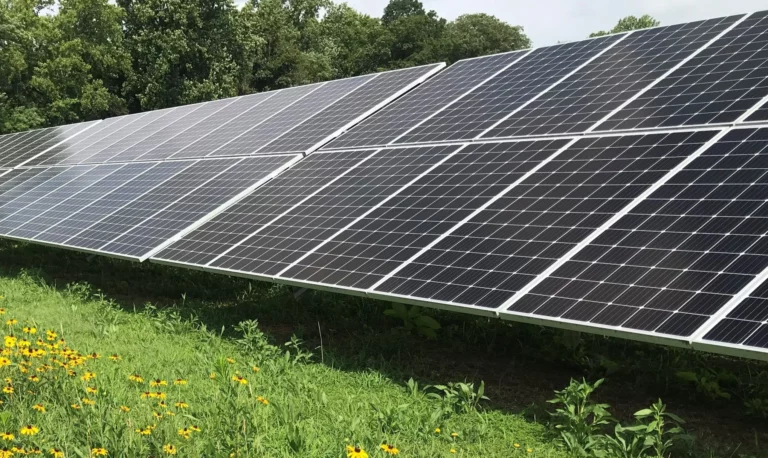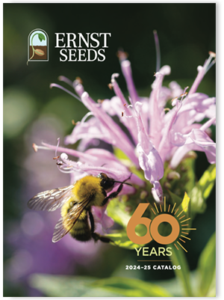by Gregory Monahan
As municipalities search for cheaper and cleaner alternatives to fossil fuels, the number of solar installations across the United States is ramping up. With the U.S. government expecting solar energy sites to cover an area about the size of Massachusetts by 2050, one important issue will continue to arise: what should energy companies do with the land surrounding large-scale solar farms? For years, the default answer was to install and maintain a traditional grass lawn. But recent evidence showcasing the economic and environmental benefits of native vegetation surrounding these solar farms may lead to a new trend in landscaping around solar energy sites.

Native Vegetation or traditional turf? The results are in, and the choice is clear
Developing and maintaining traditional grass lawns has been an overwhelmingly popular choice in America for both businesses and homes since the 1950s. But after the turn of the century, as people grew more environmentally conscious and businesses looked to decrease overhead costs, the case for native vegetation has experienced a bit of grassroots revival.
That revival was led forward by scientific work showing both economic and environmental advantages to choosing native vegetation over a carefully grown lawn, such as a 2010 USGS study highlighting what many had already suspected – rain gardens covered by native plant species demonstrated better soil health, more stormwater infiltration and drainage and deeper root growth than the gardens with turf grass.
And if the environmental benefits aren’t enough to convince individuals to rethink the idea of a traditional lawn, often the economic benefits are. The installation of a sodded turf grass lawn can have a per-acre cost of up to six times more than that of seeding an area with native species. But that’s just the start – the even larger economic benefit of native vegetation is due to the substantially lower cost of upkeep and landscaping. Without nearly as much equipment, labor or mowing required to keep areas of native vegetation in proper health, it’s estimated that upkeep costs in areas with native vegetation are about 80% lower than a traditional grass lawn.

A boost in popularity for native vegetation at America’s rapidly growing area of solar farms
As native vegetation was growing in popularity, so was the total area of America’s solar energy farms. The connection between the two wasn’t apparent at first; most solar farms were surrounded by gravel or grass. But as the solar energy community learned more about the technology with the addition of each new farm, encouraging trends began to emerge when areas of native plant species were allowed to grow around these solar farms.
Wherever these native plant species went up, local pollinator species tended to follow soon after. It makes sense in a type of “If you build it, they will come” way – provide more plant species to local pollinators, and they’ll have more chances to make their homes there.
And while the topic of whether or not solar farms provide an extra boost to native vegetation and pollinator species is still being studied, some states aren’t waiting for results. Lawmakers in Minnesota passed legislation in 2016 that provided guidance to solar energy companies on plant species and seed mixes from the state’s Department of Natural Resources. It also allowed solar energy companies to publicly declare their areas as beneficial for local birds and insects. Not wanting to fall behind, state legislatures in South Carolina, Oregon and Maryland have also passed legislation encouraging solar companies to plant native vegetation species at their large-scale solar farms.
An upcoming study and a hopeful future
More information on the benefits of native vegetation at solar sites is right around the corner. A Cornell University study due for release in 2022 will examine pollinator populations and pollinator visits to crop flowers, hoping to provide insight on just how much of a benefit native vegetation sites at solar farms provide to the local ecosystem. And with the clear environmental advantages and cost-saving nature of native vegetation, these types of pollinator-friendly habitats will continue to grow in the United States right alongside the number of solar energy farms.


